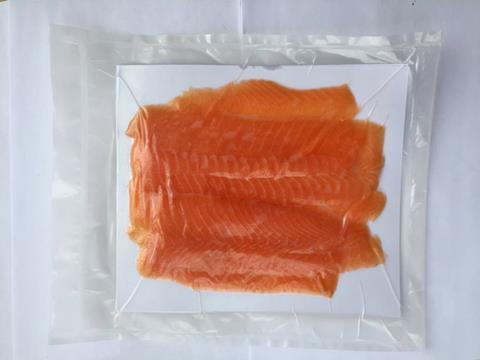
Amidst increased demand from consumers and brands alike for sustainable solutions to plastic pollution, bioplastics have become a frontrunner. This publication has reported on numerous innovative bioplastic products over the past year, from films and pharmaceutical packaging to disaster relief solutions and confectionary boxes.
Interestingly, many bioplastic solutions are increasingly coming from one of the places in which the plastics waste issue is most apparent – the marine world. Innovators including Lucy Hughes, the winner of last year's James Dyson Award, and CuanTec are turning to the sea for inspiration.
Fin Slater spoke to the latter to see if its bioplastic solution might be able to function as a viable alternative to standard plastic food wraps.
Could you introduce CuanTec to our readers and tell us a bit about what the company does?
CuanTec is a Scottish blue biotech company tackling plastic pollution and food waste with one singular circular solution – an antimicrobial, home compostable replacement for plastic food packaging.
Could you introduce your bioplastic flexible film solution?
Our films are based on use of chitin, the second most abundant natural biopolymer in the world, found in many places, so it is an excellent sustainable material that we can get from many streams of food waste.
We extract this chitin from the waste products from food processors of the shellfish industry (shells, heads, claws, tails – the parts people don’t eat) and convert it to chitosan. We then mix this chitosan with other natural ingredients to produce a flexible film similar to traditional plastic packaging. But, unlike plastic packaging, CuanSave will biodegrade within 90 days in a home compost heap without causing any damage to the environment. As chitosan has antimicrobial properties, so does our packaging – this means it can extend the shelf life of products contained within, helping to reduce food waste.
Can you explain the R&D process that lead up to the creation of the product?
Chitin and chitosan are not new products and already have thousands of industrial uses, but the traditional method of chitin extraction and conversion to chitosan uses lots of harsh chemicals, resulting in toxic waste streams. It became a huge focus of the R&D process to make this as sustainable as possible. Our scientists have come up with an innovative method of biological extraction. By using bacteria in the process, we have significantly reduced the volumes and concentrations of caustic chemicals used and minimised all waste streams. Indeed, the only ‘waste’ we now have is a high protein liquid that we would like to repurpose into a fish feed for salmon.
Our process is also much more gentle than chemical methods – this allows it to be carried out at a much lower temperature and reduces the energy input of the process.
What are the environmental benefits of CuanSave?
Our entire process is designed to be part of a circular economy. We only use waste from food processors (that would otherwise go to landfill or be incinerated) as our raw materials and have designed a zero-waste process with a compostable product. Our product is taken from nature and returned to it at the end of its use.
Our biological process is significantly better for the environment as there is a massive reduction in harsh chemicals used, waste produced, and energy required.
The product itself will help reduce plastic pollution as it is completely home compostable – there will be no lasting negative impact on the environment from toxic by-products as it degrades. CuanSave will break down into its natural components which do not harm the environment.
There are also major benefits from its antimicrobial properties, such as shelf-life extension of fresh products, leading to a reduction in food waste. This will stop tonnes of harmful emissions entering the atmosphere and save money for food producers, retailers, and consumers.
What makes this product different from other bioplastic products?
Not all bioplastics are easily biodegradable, and many require harsh industrial conditions to break them down. This process can require lots of energy input. CuanSave will naturally break down in around 90 days without requiring a high energy process. Our packaging will be able to be disposed of in a home composting heap or food collection bins without any further thought (no washing to remove food scraps).
What are your expectations for the future of the product?
Our immediate focus is on the scale-up of our lab process and opening a pilot plant so we can begin large scale production of our chitosan. The first product we aim to make is an antimicrobial, home compostable packaging for fresh seafood. We were granted substantial funding in September 2019 which is going toward buying equipment to increase our capacities. This is our main focus for Q1 of 2020 so full-scale production of CuanSave can begin in 2020.
As we progress, we hope to enter other markets and replace single-use plastic wherever possible – there are hundreds of opportunities and a lot of plastic packaging to replace!














